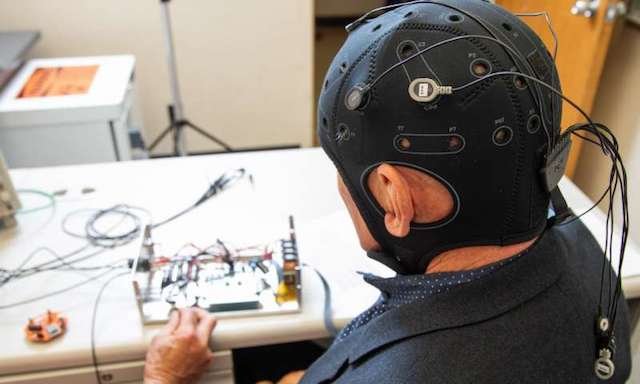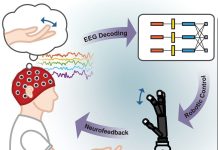
In a recent study, researchers from Stanford University develop a device that could help bring back lost brain function.
The approach could open new avenues for treating brain disorders and selectively switching brain activities on and off.
Neurostimulation via electrodes placed on the scalp has shown a lot of promise, but its immediate effects are hard to study.
This is because the brain’s neural response gets easily swamped by the million times stronger pulses that researchers send into the brain.
To detect the much fainter brain response, scientists had to monitor brain waves and behavioral response in separate sessions before and after stimulation.
The new device measures brain waves at practically the same time the stimulus is applied, potentially establishing a much better link between the two.
Stimulating the Electrical Brain
The brain is an intricate network of hundreds of billions of neurons.
Anything that interrupts this network, such as abnormal brain development or a stroke, can cause severe disorders, including epilepsy, depression, anxiety, visual impairment, chronic pain and paralysis.
Stimulating brain tissue alters the way neurons fire and can help the brain form neural connections.
This research focuses on applying the method to cases of visual impairment, such as amblyopia (lazy eye) and strabismus (crossed eyes), and on better understanding phenomena like binocular rivalry.
The research group develops models that describe how electrical activity from the brain’s visual centers radiates to the scalp, where it can be picked up and measured by an EEG.
They also develop models for delivering electrical pulses to specific locations in the brain, where they alter brain function associated with vision.
Doing so simultaneously isn’t possible with today’s clinical EEG systems, but that may soon change thanks to the collaboration.
A New Type of EEG
About a year after the project received funding through Stanford Bio-X, the team has successfully tested a prototype for an EEG system that can deliver electrical brain stimulation and measure the brain’s ongoing activity at the same time.
To do so, they paired the electronics board of a conventional EEG monitor with another one they built that delivers electric stimuli generated with 9-volt batteries.
Then they successfully tested the device on themselves.
Toward Medical Therapy
More work needs to be done before studies on a larger group of people can begin.
For example, future versions of the device will have more electrodes and will provide more control over the way the pulses are delivered.
But the team’s plans don’t stop there.
“Right now, we can basically switch stimuli on and off and set their intensities and durations.” one author said.
”In the next generation, we’ll be able to program the device, which will let us choose different types of signal shapes and synchronize electrical signals with other external triggers, such as visual stimulation.”
“In the long run, we would like to develop a device on a chip. That would make neurostimulation available to patients wherever they go.”
Copyright © 2018 Knowridge Science Report. All rights reserved.



